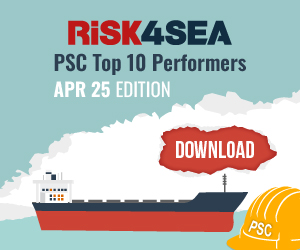Namely, the latest version of the Multiannual Energy Programme (Programmation pluriannuelle de l’énergie (PPE)) indicates that France has increased its offshore wind tendering target from 6GW to up to 8.75GW by 2028.
The revised PPE increases the intended operating offshore wind capacity from between 4.7GW and 5.2GW by 2028, to between 5.2GW and 6.2GW by 2028.
[smlsubform prepend=”GET THE SAFETY4SEA IN YOUR INBOX!” showname=false emailtxt=”” emailholder=”Enter your email address” showsubmit=true submittxt=”Submit” jsthanks=false thankyou=”Thank you for subscribing to our mailing list”]
It is said that the 2023 capacity target stayed at 2.4GW, covering the six already approved projects.
Remarkably, France has added a tender for one more 250MW floating wind tender in the Mediterranean in 2022, as well as one fixed foundation tender of between 500MW and 1GW to be carried out in 2021 or 2022, as compared to the earlier proposal, which included the 600MW Dunkirk tender.
It has been suggested that this fixed foundation tender will be reserved for projects off Oléron.
Another major change is the increase in the proposed annual tendering capacity from 500MW to 1GW from 2024 to 2028.
France now plans to cover 33% of its gross energy consumption with renewable energy by 2030.
The PPE sets the priorities for action by the public authorities in the energy field in order to achieve the objectives set by law:
- reduce greenhouse gas emissions by 40% between 1990 and 2030;
- greatly reduce final energy consumption (-20% in 2030) and in particular the consumption of fossil fuels (-40% in 2030);
- bring the share of renewable energy to 33% of gross final energy consumption in 2030;
- reduce the share of nuclear power in electricity production to 50% by 2035.
The PPE puts France on a trajectory which will make it possible to achieve carbon neutrality in 2050, and thus set the course for all the energy sectors which could constitute, in a complementary way.
Once adopted, the PPE will set the regulatory framework defining:
- the quantitative objectives of the calls for tenders for electricity production installations (from renewable energy in particular), for capacity to erase electricity consumption, or for investments allowing the injection of biomethane into the network’s gas;
- the guidelines with which the authorization to operate new electricity production facilities, as well as the EDF strategic plan provided for in article L311-5-7 of the Energy Code, must be compatible;
- the level of security of supply of the French energy system, by setting the “failure criterion” used to assess the balance between supply and demand for electricity, or the criterion for the security of gas supply natural and storage to be kept in operation.
Recently, DNV GL published a report focusing on the offshore sector and the aspects of it, providing an insight into all fields of the sector, from the offshore regulations that have been implemented, to the future of turbine technology, reporting that the growth of the sector depends on 12 key factors which influence the adoption of offshore wind.
It was stressed that up to now, the governments and policy players have contributed in reducing risk by facilitating stable, transparent regulatory frameworks, reducing project risk by securing wind resource data, geotechnical studies and even grid connections and transmission to the projects, Incubating new technology development (with gradually reduced subsidies and offtake guarantees to the power grid) and followed by introducing open auctions which allow for more transparent international price competition from bidders/investors.
Namely, shortly after, the INESC TEC Insitute along with the energy company EDP, launched a project for the construction of the first real-time maritime robot testing center, used for offshore wind in Europe. Through this offshore project, development of monitoring and maintenance technologies for offshore infrastructures will get a boost.































































